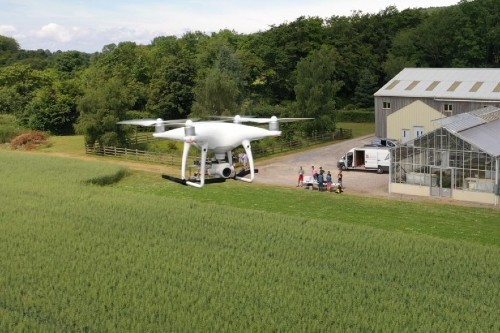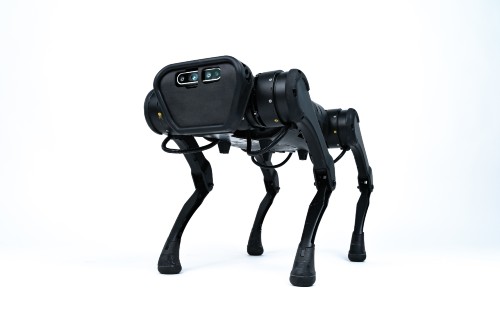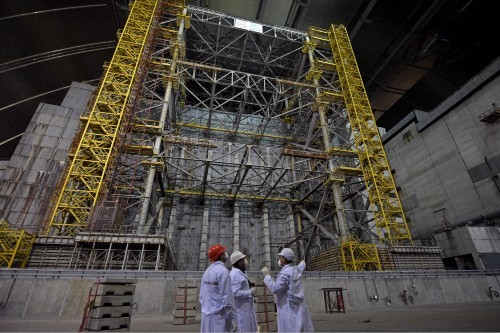The aim of the game-changing National Nuclear User Facility for Hot Robotics (NNUF-HR) is to make robotics and facilities readily available to researchers from both academia and industry, to facilitate ground-breaking, impactful nuclear research.
Funded by the Engineering and Physical Sciences Research Council (EPSRC), the four NNUF-HR sites are managed by the individual partners and are strategically dispersed across the UK. These include the University of Bristol’s Fenswood Facility in Somerset; the RACE (Remote Applications in Challenging Environments) at UKAEA (UK Atomic Energy Authority) Facility at Culham in Oxfordshire, The University of Manchester’s RAICo One in Whitehaven and the National Nuclear Laboratory’s (NNL) Workington Facility in Cumbria.
Each facility provides technology and test spaces, as well as technical support, that would otherwise be very difficult - or very expensive - to access. At the different sites, users can hire cutting-edge equipment, including quadruped robots and unmanned aerial vehicles (drones), to use on-site or at their own locations. They can also bring their own technology to test in different simulated environments and mock-up rigs.
The University of Bristol's Fenswood facility provides substantial space for developing mobile robotic applications as enhanced tools for environmental field surveying. Its main capabilities focus on UAVs and mobile ground vehicles and it offers 245 acres of space for testing the deployment of drone and ground robots.
Professor Tom Scott, NNUF-HR Academic lead from the University of Bristol said: “The aim of this initiative is to provide the UK nuclear research and development community with better equipment and facilities. As someone who has worked in the field for many years, the fact we now have these four fantastic facilities and a website where users can actually select from a wide range of cutting-edge equipment to hire, I would say this is truly a game-changer for the industry.
“I’m delighted the Fenswood Facility here at Bristol is now available to Hot Robotics users. The amount of ground and air space we have available for test deployments is a fantastic resource to complement the wide range of robotic equipment and sensor systems on offer.”
The Hot Robotics website (https://hotrobotics.co.uk/) represents another first-of-its-kind for the industry, giving users the ability to view, book and learn more about the technology and facilities available at the four sites.
While the facilities are available for use by the whole UK nuclear energy R&D community, UK academic researchers can access equipment from the NNUF facilities for free through the Access Scheme Fund which runs quarterly application rounds. However, researchers can apply for grants of up to £5,000 at any time.
The NNUF Management Group, comprising of Professor Chris Grovenor of the University of Oxford, Professor Malcolm Joyce of Lancaster University, and Professor Francis Livens of the University of Manchester, commented:
“We’re pleased to see the NNUF-funded Hot Robotics facilities come online, offering a wide range of innovative robotics equipment to serve key nuclear industry clusters around the country. We urge both academia and industry to make use of these facilities and look forward to seeing researchers advance the technologies to solve challenges in the nuclear sector.”
Professor Barry Lennox, who leads the NNUF-HR facility at The University of Manchester, said: “The RAICo One facilities provide a unique environment where researchers from academia can work directly with engineers and operations staff from across the NDA estate and the nuclear supply chain, to ensure that the robotic systems they are developing address real industrial challenges and can exploit the direct route to industry deployment that is being established”.
Dr Darren Potter, Capability Leader (Plant Intervention) at the National Nuclear Laboratory (NNL), said: “We are delighted to unveil NNL’s National Nuclear User Facility for Hot Robotics (NNUF-HR), using our world-leading facilities for large-scale scientific testing and deployments. The partnership will enable us to expand NNL’s centre for robotics at the Workington facility in Cumbria, which plays an active role in the UK’s cutting-edge nuclear research across this exciting field of study.”
Professor Rob Buckingham, Director of UKAEA’s RACE facility, said: “The purpose of NNUF is to accelerate the development of capability and capacity in the supply chain, from invention to scaled-up operations, in robotics and smart machines. The NNUF-HR facility at RACE will bring together end users and businesses to help create a viable innovation pipeline.”


